Last Updated on April 4, 2024
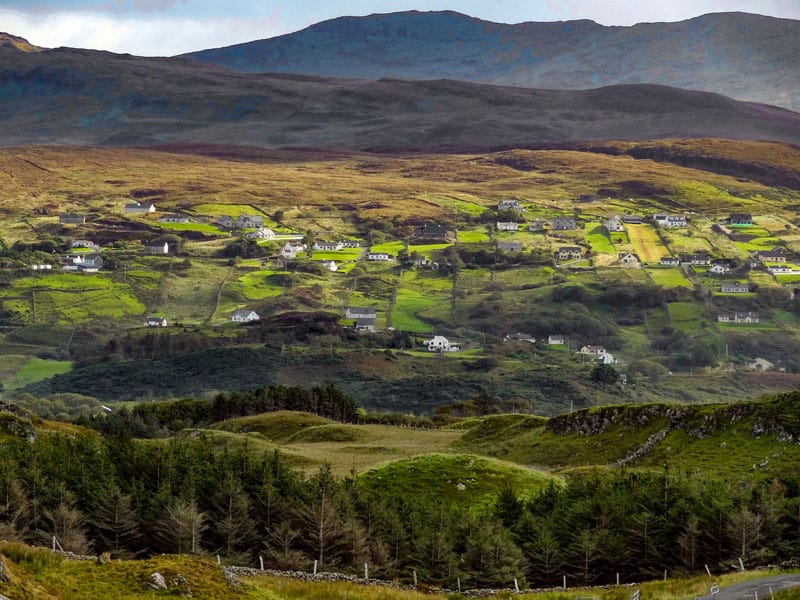
By Jim Ferri
Tucked away up in the northwest corner, Donegal, Ireland, doesn’t attract much attention.
In fact, it’s almost forgotten Ireland. That’s because many travelers instead head for Dublin in the east or Kerry and Killarney down in the southwest. But still, you’ll find some exciting things to do in Donegal’s little corner of Ireland if you’re willing to make the drive.
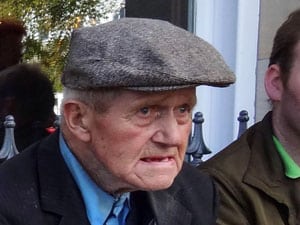
And to tell you the truth, it isn’t even that long of a drive. It’s only about a 2½ -hour drive from Dublin, a bit more from Shannon Airport, all on good roads.
Those who venture up to this pristine area of northwest Ireland usually come because of its rugged landscape. That is especially true along its scenic coast, which morphs between soaring cliffs and golden beaches.
Like its coastline, Donegal is very different than most of Ireland. In fact, that includes the name of the region since it’s named after the Vikings. In the old Gaelic, Donegal means “fort of the foreigners.”
Donegal is one of the official “Gaeltacht” areas of Ireland, strongholds of Ireland’s ancient Gaelic language. In some areas, people still speak Gaelic, which is the first language. But English is also spoken. All in all, it’s an excellent way to preserve a language and an ancient culture, including its song, dance, and folklore.
The heart of the Gaeltacht in County Donegal is in the Derryveagh Mountains range and the scenic Poisoned Glen. (You can learn more about Poisoned Glen, the one-eyed Giant, and the beautiful princess here).
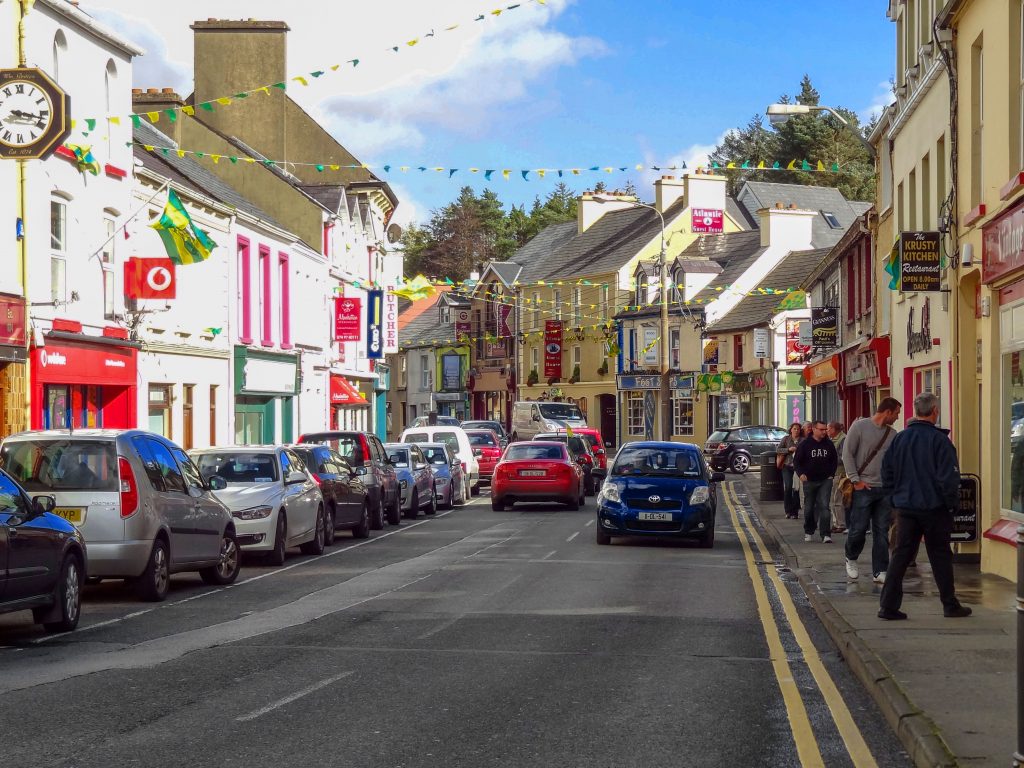
Donegal – A Pretty Countryside and Town
Hands down, Donegal is a picture-perfect region of Ireland. It’s a place with the most rugged and picturesque coast on the island. A place with vast bogs, soaring mountains, picturesque farms, and more sheep than people. For travelers, it’s best seen by car since traffic is almost non-existent, leaving little between you and the magnificent landscape.
Driving north on the N15 from Galway, I passed through a lot of that landscape. After skirting Ballyshannon, the oldest town in Ireland, I was soon in Donegal town, billed by locals as “the largest little village in Northwest Ireland.” With fewer than 3,000 inhabitants, they may be right.
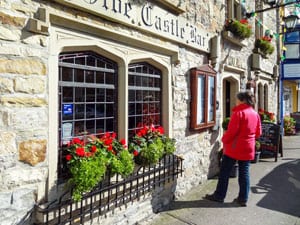
Surprisingly, although Donegal town gave its name to the country, it’s the town of Lifford that is the county seat. More surprising is that little Lifford has only half the population of Donegal and it sits right on the border with Northern Ireland.
I was wondering what I would find as I drove into Donegal town, and was immediately astounded to find a castle right in the middle of town. It was built, I discovered, by an O’Donnell chieftain in the 15th century. Then it was added onto in the 17th after the English kicked the O’Donnell’s out.
Across from it is Donegal’s Church of Ireland, snuggled up next to the Olde Castle Bar & Red Hugh’s Restaurant. The trinity, all made of the same stone, almost look like giant children’s toys.
O’Donnells Castle sits on the bank of the River Eske, and when I walked across the little bridge alongside it, I was surprised to see hills just a few blocks away. You know a town is small when the countryside tumbles right into it.
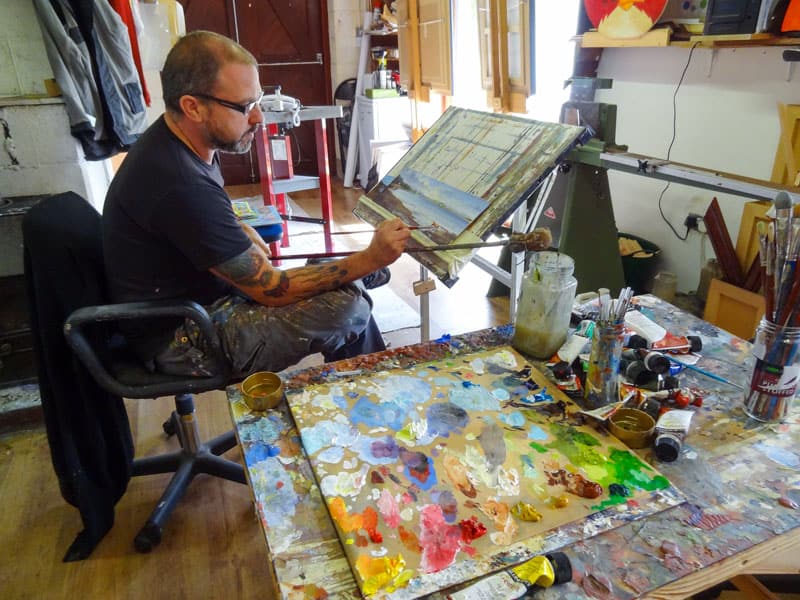
A Pleasant Irish Town
There’s not a lot to see in Donegal town itself. Many travelers, in fact, use it mainly as a base for exploring the surrounding Donegal countryside. Still, it’s a pleasant little Irish town to walk about and drop into pubs, restaurants, and little shops to chat.
One of the shops you might head for is 150+ -years-old Magee of Donegal, Ireland. There you’ll find the mother load of Donegal tweed, one of the most popular types of tweeds in the world.
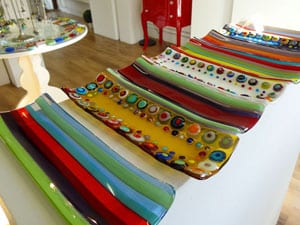
When Magee started the business, the tweeds were handwoven in the Donegal countryside by part-time fishermen/farmers and part-time weavers. It was the perfect fabric for dissipating the damp and cold weather so often found in Northwest Ireland.
You’ll find other shops good for chatting about a five-minute drive out of town at the Donegal Craft Village. A showcase for contemporary arts and crafts in Ireland, it’s a small art collective formed by a clutch of craftspeople.
I found a weaver, glassworker, sculptor, and artist, all producing interesting quality work when I visited. It’s interesting and worth stopping by to see and, perhaps, make a purchase. The conversations were quite interesting, as well.
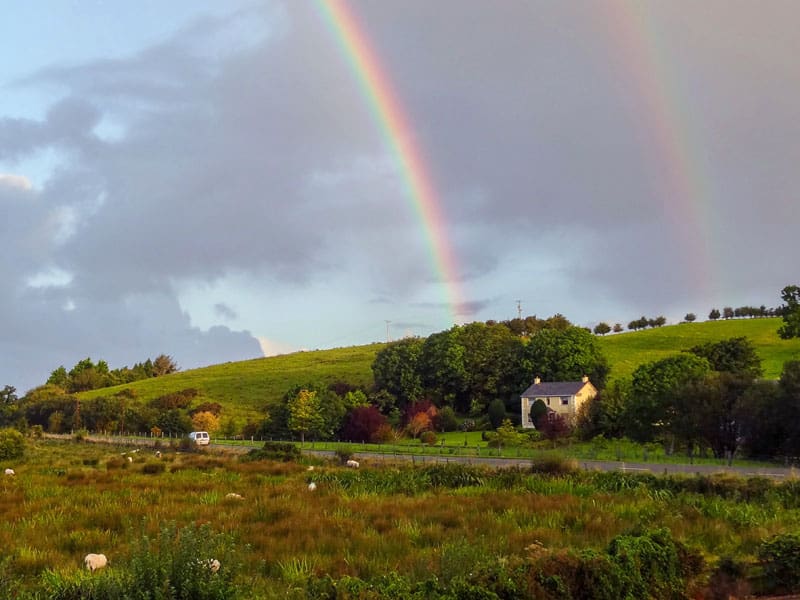
A Wonderful B&B in Donegal
I love Irish Bed & Breakfasts and stay in them whenever it’s convenient. I spent only two nights in Ireland’s Donegal town, staying at the excellent Cove Lodge Bed &Breakfast. When I went to leave on the second morning, the owners, Joan and Liam, came running out to my car. They wanted to say goodbye, which I didn’t expect since I knew they were pretty busy.
Over breakfast a half-hour earlier, I learned my hosts had eight children in a conversation with an Australian couple. Knowing their morning meal was still underway in the kitchen, I tried, unsuccessfully, to leave quietly without disrupting it. Now, in their driveway, I was caught.
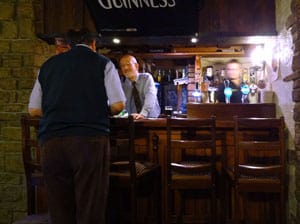
Earlier, Liam had asked where I was going. After I told him I was heading north towards Londonderry, he suggested alternate routing.
“You really should see Slieve League,” he told me. He explained that this geographic jewel of Donegal, Ireland was the highest cliff face in Europe. Also known as Sliabh Liag or Slieve Liag, it is three times higher than the famous Cliffs of Moher, 200 miles to the south.
Liam fetched a map and showed me how to get there. Then, pointing to a spot on the map, he advised, “when you come to the gate, continue on up the road by car rather than walking. Just remember to close the gate behind you, so the sheep don’t get out.”
That morning I followed his routing through Killybegs, Ireland’s largest fishing port, and continued in the direction of Slieve League.
All along the way, I was surprised at how well signposted it was, the best I’d seen anywhere in Ireland. At every turn, there seemed to be a sign pointing me in the right direction.
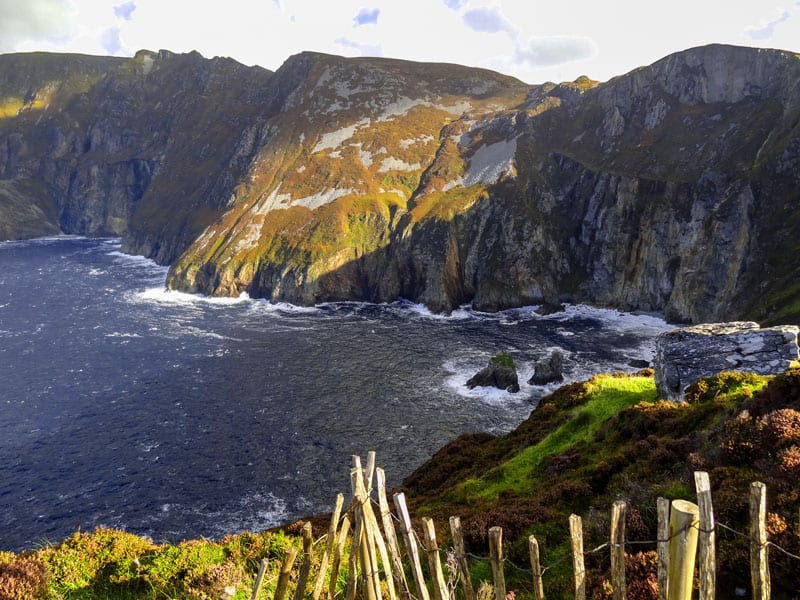
Incredible Slieve League
As I moved further west, the terrain became hillier, providing dramatic views across the valleys. At times, it was raining on one side of the valley and sunny on the other, with rainbows linking the two.
Sheep speckled the landscape, with red and yellow hillside houses exploding like fireworks from
the green tableaux all about. Donegal, Ireland, is heaven for photographers and painters.
I soon reached the gate and let myself through, making sure to latch it behind me. The road soon became a narrow, twisting sliver of asphalt running along a sheer drop into the sea.
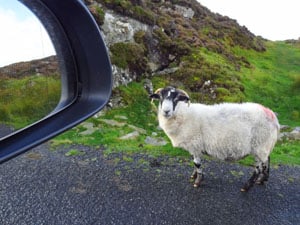
I was a safe distance from the edge, but there were only large rocks along the edge warning of the drop-off. As I continued along my way, the few meandering sheep seemed unruffled by my intrusion onto their grazing land.
A beautiful view of Slieve League met me at end of the road. Although I was visiting during mid-September, I still found myself buffeted by the warm wind. Occasionally I’d also feel the spray from the waves crashing far below.
If you’re a hiker, you can continue onto the very top of Slieve League by hiking along Pilgrim’s Path. The 2-mile hike (3km) takes about 2-3 hours to reach the cliffs and return.
If you’re adventurous – and energetic – continue on from Slieve League along One Man’s Pass, back to civilization. It will take 4-5 hours to hike the entire way, an hour less if you can flag down a ride. Although there are remains of a monastic site here, I never saw it, likely because I didn’t venture further. I did, however, see ancient beehive huts on my drive up.
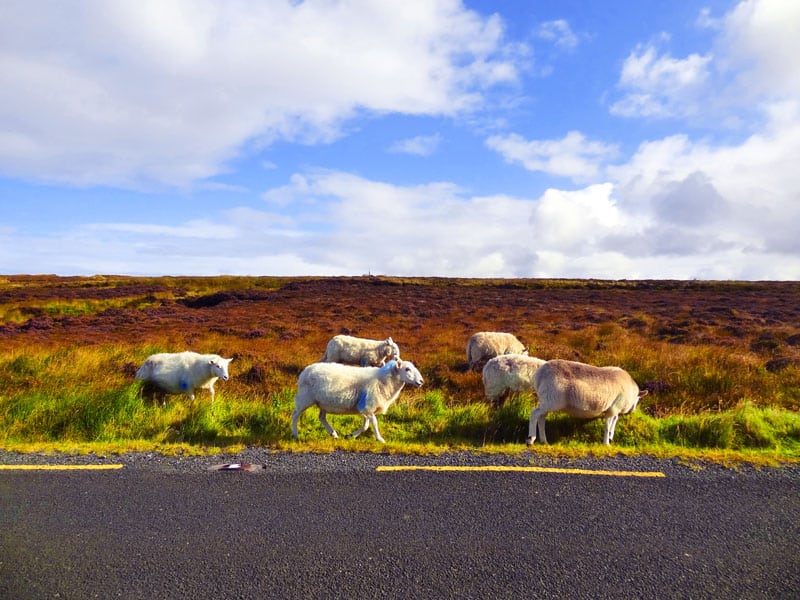
Across the Pretty Donegal, Ireland Countryside
I had also seen several tour-group minibuses at the end of the road where I parked. I also encountered several more on my way back down. It surprised me since I had passed so few cars as I drove here from Donegal town.
Once back down and out through the gate, I realized why when I passed a craft shop. Outside it, large tour buses were transferring passengers onto the smaller minibuses to ferry them to the top.
Further down the road, I turned north towards Glencolmcille and the Glencolmcille Folk Village, also recommended by Liam. The 15-minute drive took me across an austere but picturesque bog, with a landscape morphing between green, brown, and gold-colored grasses, with heather poking up all about.
Every now and then, I passed a neatly stacked pile of peat brick alongside the road. Free-roaming sheep were everywhere, causing me to slow down but also providing time to allow me to enjoy the landscape. On a mountaintop far off in the distance, I could see the remains of an ancient castle or watchtower.
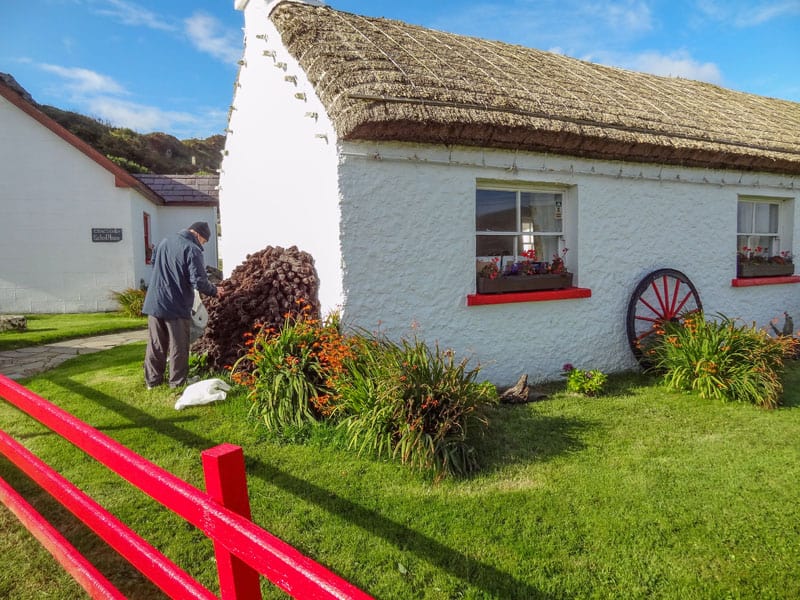
Donegal’s Glencolmcille – Ireland’s Fascinating Folk Village
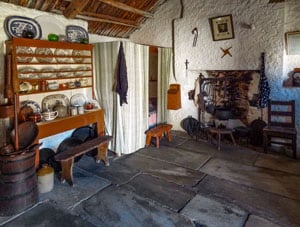
It is likely since it is a bit out of the way, when I reached the Folk Village, it first appeared I had the place to myself. But I was soon joined by another couple who seemed interested in wandering through the cluster of cottages like me. We all wanted to learn more about life in 18th-, 19th – and 20th -century rural Ireland.
Traditionally, these were called a” clachan,” a small group of single-storied homes of farmers and fishermen. This clachan provides an insight into rural Irish life for the previous 300 years. It’s fascinating since each thatched-roof cottage houses the furniture, utensils, and artifacts of a different period.
I enjoyed seeing the schoolhouse, the tiny pub/grocery store, and the fisherman’s house, among others. Each allowed me to understand how living conditions in rural Ireland slowly changed over time. Designed and built by local people, they provided a fascinating historical insight into the life of this rural sliver of Donegal.
You may also enjoy: Driving Northern Ireland’s Coast Road / Black Taxi Tour of Belfast / The Titanic Museum Belfast – Just Awesome.
If You Go to Donegal, Ireland
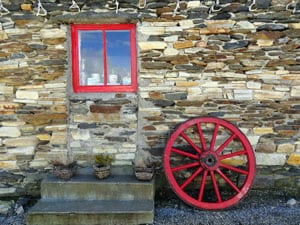
If you decide to visit Donegal, it’s best to make the journey by rental car. As noted above, it’s an easy trip from Dublin, a bit longer from Shannon.
You can also, as I did, continue your trip into Northern Ireland after leaving Donegal, perhaps along the Coast Road. Belfast, a city well-worth visiting, is only a two-hour drive from Donegal Town. On the other hand, you may also want to visit places like the Giants Causeway en route to the Northern Irish capital. And don’t miss the incredible Titanic Museum while you’re in Belfast.
From Belfast, it’s less than a two-hour drive south to Dublin. Or you could take a comfortable train ride in about the same time. There are no border crossing formalities between the two nations, nor are there any issues with rental cars.
Irish Tourist Board
345 Park Avenue
New York, NY 10154
Tel. (800) 223-6470
Donegal Tourism
[email protected]
The Cove Lodge B&B
Drumgowan
Donegal Town
Co. Donegal
Tel: +353 (0)74 9722302

Leave a Reply